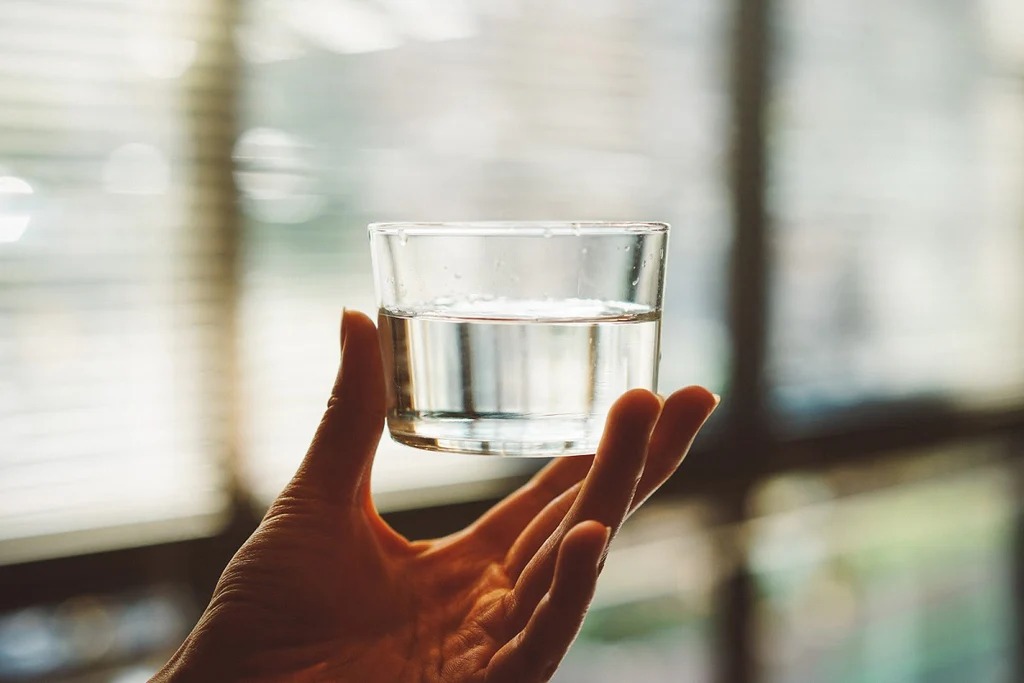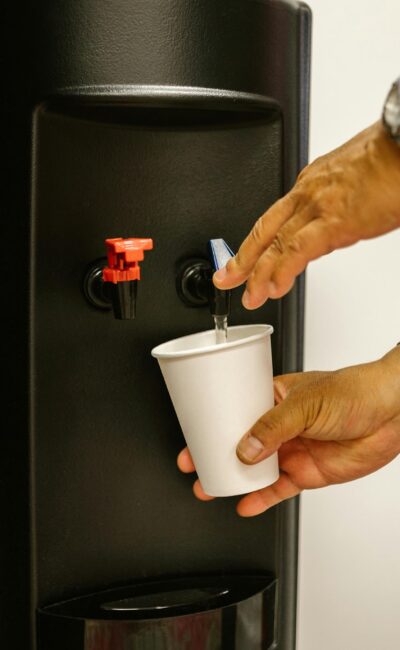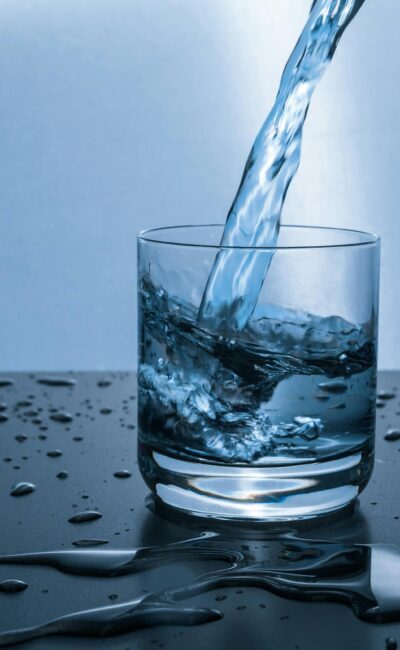Comparing Reverse Osmosis vs. Distilled Water: Which Water Treatment Is Best?
There are several methods of water purification that change the quality and taste of the water you choose to drink. When comparing reverse osmosis vs. distilled water, both water treatments have their own benefits; however, there are a few drawbacks as well.
We’re breaking down the process of each as well as alternatives to consider when it comes to achieving your daily water intake. By better understanding how each approach works, you can make a more informed decision about the type of purification process that’s right for you.
How Reverse Osmosis Works
Reverse osmosis filtration systems use a semi-permeable membrane that captures micro-contaminants, leaving behind fresher water. According to the Centers for Disease Control, this purification method is marked with a “very high effectiveness” rate in removing bacteria and viruses, as well as chemicals, such as copper, lead, and chromium. Reverse osmosis is particularly beneficial for those who live in areas where there is heavy pesticide and herbicide use that can make its way into the public water system.
Because this type of filtration is so effective, it takes the good along with the bad. Reverse osmosis provides a healthy drinking water source but can eliminate the natural elements and minerals found in tap water that carry health benefits. Important electrolytes, such as calcium and magnesium, among others are stripped out during the process since there’s no way to differentiate what goes and what stays. People who rely on reverse osmosis water, sometimes stylized as RO water, may miss out on essential minerals they may have previously been receiving from their tap.
How Water Distillation Works
The water distillation process relies on boiling water and collecting the water vapor as it condenses, leaving contaminants, bacteria, and chemicals behind. This process kills microorganisms, including viruses. However, like with reverse osmosis, there’s no control over what gets filtered out and what stays.
Water distillation removes oxygen and other trace minerals from water, which changes the taste and the benefits tap water offers. Additionally, the production levels of a water distillation system may be limited on how many gallons of purified water that can be produced per day. For large organizations and heavy traffic areas, this may not be the most sustainable option to meet a high demand.
Cost and Maintenance Comparisons
In addition to the level of water purity of each system, when it comes to comparing reverse osmosis vs. distilled, another factor to consider is the cost and maintenance of each. The higher the volume of treated water required, the more expensive the system will be. Both often run several thousands of dollars and may need replacing every few years, based on the quality of upkeep.
Regular maintenance is required for both types of purification systems to maintain their integrity, which can become inconvenient and should also be a factor when choosing a system that works best for your business. Questions to ask when considering which system is best include:
- How much purified water do I require each day? For industries like hotels, airports, and gyms, the inability to provide a steady stream of purified water daily may not be worth the cost. Scalability is important.
- Do I have the time to perform regular maintenance? To get the most out of each of these systems, it requires a stringent schedule of cleaning and upkeep.
- How will I replace any lost minerals that are removed along with the contaminants of the tap water supply? While purified water is a benefit, it comes with conditions of losing out on essential minerals that are found in the natural water source.
Comparing costs of reverse osmosis vs. distilled water solutions and weighing the pros and cons of each water purification method allows you to make the best choice for what you need.
Positive Environmental Effects of Water Filtration Processes
Fortunately, an added value of both treatment methods is that it cuts down on the amount of plastic waste. Single-use plastic bottles are one of the greatest contributors to landfill overflow and environmental pollution, especially within the marine ecosystems. Making the switch to a purified, filtered water system rather than relying on plastic bottled water or jugs cuts the level of plastic waste substantially.
It encourages the use of reusable water bottles and allows everyone to enjoy fresh drinking water without fear of chemicals, contaminants, and unappealing odors and tastes that are often found in regular tap water. However, it’s worth mentioning that certain reverse osmosis systems may contribute to water waste depending on the unit’s ability to produce back-pressure. Although the water that dispenses is purified and ready to drink, there are gallons that go unused and are discarded to the septic system. With sustainability in mind, this may not be the best solution.
FloWater Refill Stations Offer Benefits of Both Purification Methods
Flowater’s unique system offers the benefit of both reverse osmosis and advanced purification. It transforms tap water by removing up to 99% of impurities found in typical tap water. The water treatment process includes seven stages of filtration that improves the taste and water quality on all levels.
Advanced Osmosis and Filtration
Within the first three steps of the FloWater purification process, specially designed filters capture the harmful contaminants and ensure even the smallest impurity is removed. It’s in the third stage of filtration, tap water undergoes the advanced osmosis process. FloWater uses a semi-permeable membrane to remove trace contaminants like bacteria, lead, viruses, pharmaceuticals, and other metals and dissolved solids. This has five times the efficiency of anything else currently available on the market.
The bonus is that the following stages add back minerals and electrolytes stripped out in this stage. Regular reverse osmosis does not include this step. Regular systems filter but do not replace organic elements that are conducive to good health and the taste of the water.
Prior to the advanced osmosis level of filtration, the other unique filters work in tandem to produce the best-tasting, highly purified water. In stage one, the sediment filter captures dirt, rust, and suspended solids found in tap water and water system pipes. Many municipalities still use lead pipes or other old and outdated water systems that leach chemicals and impurities as the water makes its way to the tap. The sediment filter is the first line of defense against this.
The carbon filter removes smaller particles and unpleasant odors and tastes, such as hydrogen sulfide, radon, and chlorine. Following this second filter, is the advanced osmosis process. Here, the clean water is wholly purified, and the next three filters are focused on improving the water’s quality and taste.
Water Enhancements for a Crisp, Refreshing Finish
In the fourth stage, activated oxygen is added to the water which sanitizes the tanks and internal system through the use of a naturally occurring molecule formed when the third oxygen atom is included. This phase also increases the level of oxygen available to improve the taste of the water, an area that’s lacking during the water distillation process.
Next up is the alkaline enhancement which adds a proprietary blend of ten trace minerals to the water that have been stripped out from the previous filters. This raises the pH level of the water and helps to neutralize acidity in the body and relieve stress on your internal organs.
To learn more about the difference between alkaline water vs. distilled water visit here.
Electrolytes are added in the sixth stage, providing calcium, magnesium, potassium, and sodium. These are important elements often promoted in sugary sports drinks and other health beverages that often have calories or additives that dilute the benefits of natural electrolytes. Finally, the coconut carbon filter leaves the clean water with its cool, crisp taste.
Meeting the Demand for Pure Water on All Levels
It’s clear there are advantages to both a reverse osmosis system and distilled water, but why settle for one when you can have the benefits of both in one environmentally-friendly, low-maintenance system with added benefits?
In addition to FloWater’s multi-level filtration system, the refill station provides the same environmental benefits as other purification systems. It eliminates the need for single-use plastic water bottles. As an increasing number of people become conscious of how much they contribute to plastic waste and want alternatives that still give them the option of fresh, purified water on-demand that tastes good, the FloWater Refill Station answers these needs on all levels.
The innovative design includes a one-touch fill button, fast dispensing time, and self-sanitizing capabilities make it alluring for businesses and organizations that are stringent on maintaining high levels of sanitation. The filling area is large enough to fit any size of water container without need for the dispenser to come into contact with the mouth of a bottle.
There’s minimal maintenance involved since the system self-sanitizes and auto-replenishes to hold seven gallons of purified water at all times, not just per day, as are limits of certain reverse osmosis and water distillation systems. The refill station is also energy-efficient without wasting any water. It has LED lights, sleep mode, and internal monitoring system to keep operating costs ultra-low.
Ultimately, it checks everything off the list, including the benefits of both reverse osmosis and distillation. The choice doesn’t have to be an either or scenario; there’s the option of having both.
Sources:
- https://www.uwhealth.org/news/dr-jacqueline-gerhart-theres-good-and-bad-to-using-reverse-osmosis-water-systems/36710
- https://www.cdc.gov/healthywater/drinking/home-water-treatment/household_water_treatment.html
- https://www.extension.purdue.edu/extmedia/WQ/WQ-12.html#:~:text=Distillation%20relies%20on%20evaporation%20to,condenses%20to%20form%20purified%20water.





